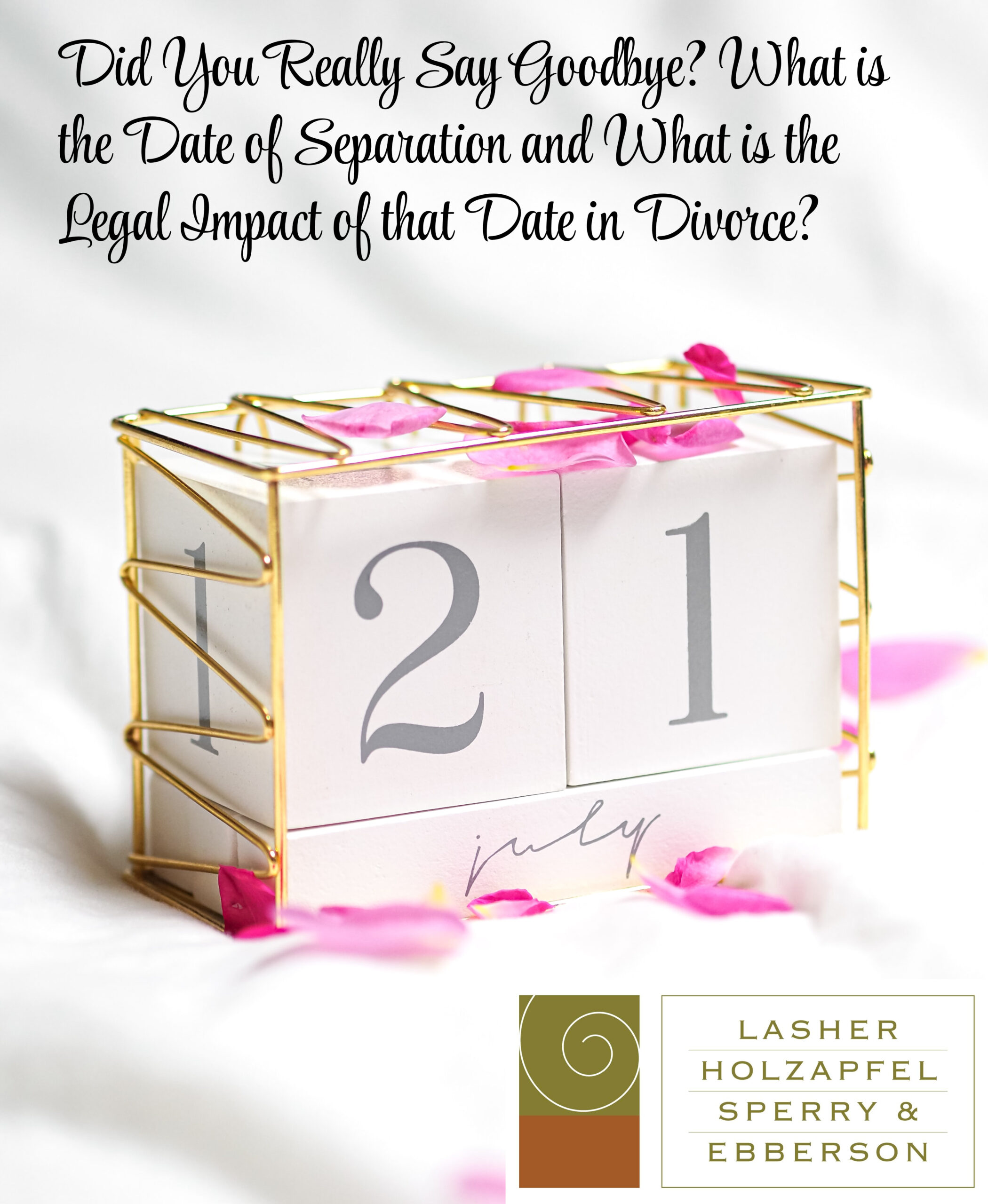Did You Really Say Goodbye? What is the Date of Separation and What is the Legal Impact of that Date in Divorce?

Posted on October 26, 2022 by Lisa Sharpe
The lyrics “We only said goodbye with words” were famously written and sung in Back to Black by Amy Winehouse. The song was about the ending of a relationship, and the theme of goodbye. Under Washington law, “words of goodbye” are not enough in a divorce to establish separation and the end of the marital community. The logistics of “Goodbyes” are difficult in divorce, and the date of separation is often contested. For example, if married parties are living apart without being divorced and one spouse wins the lottery. Are the winnings separate property? Or do they belong to the marital community?
In Washington, the date of separation determines the end of the marital community, and that date can be even more important that the date of the final divorce. The “date of separation” is when the marriage is considered to be defunct for purposes of property division. Property acquired before the date of separation is considered community property, and property acquired after the date of separation is separate property under Washington law. RCW 26.16.140 states that when spouses or domestic partners “are living separate and apart, their respective earnings and accumulations shall be the separate property of each.”
The date of separation thus naturally affects the determination of whether an asset or debt (as well as income or an expense) is classified as community property or separate property. These financial considerations can be significant enough to motivate a party to contest or challenge the date of separation if, as a result, they may potentially share in the value of an asset or have the other party share in indebtedness. Assets that may be at risk are bonuses, stock awards or restricted stock units, and retirement contributions to a 401k.
The Washington Supreme Court has interpreted the “living separate and apart” statute to require proof that a marriage is “defunct” before a court may characterize property acquired by one spouse as his or her separate property. When and/or whether a marriage is “defunct” is often the source of litigation. The legal standard is high and requires that both parties no longer desire to continue the marriage. In a divorce case, this means that often the marriage is not defunct until a divorce is filed with the court. The spouse who wants to have the benefit of community property will generally want to have the presumption of a longer marriage and by extension, a later date of separation.
Often the date of separation is unclear. Some examples of this are when the parties are living under one roof in separate bedrooms. Or if they are living apart but going through marriage counseling and taking occasional vacations together. Or one spouse may be having an affair and know that their marriage is over, but the other spouse has no idea that there is an affair happening. Or perhaps they are going through a “trial separation” but they have not told their children or their families.
How do you then prove the date of separation and that the marriage is defunct? Proving the separation date requires corroboration and this can be done in a number of ways:
One form of proof is if one spouse directly writes out their intent to separate and seek divorce. They need to not only prove their intent, but also provide evidence of it. How do they do that? The easiest way is to express their intent in writing: they may write a letter or send an email to their spouse so that they have objective evidence of their state of mind. The separation is memorialized in a document tied to a specific date. Also, actions speak louder than words; they should not continue to take vacations together, post couple’s pictures on Facebook or send out Holiday Cards together. Ideally, they would also begin using separate bank accounts.
Another form of proof is from a third-party witness, other than either of the spouses. When separating, it is advisable not only to tell your spouse in writing, but also to tell someone else – a friend or family member – about the separation, and also show the friend or family member that you have separated. The signing of rental lease could be used as evidence for purposes of establishing the date of separation.
As detailed above, date of separation and the legal impact of that date can be complex and highly disputed in a divorce case. The Family Law Practice at Lasher is here to help you with these and other matters relating to dissolution, mediation and collaborative divorce.

